How Isaiah Bradley and Steve Rogers Define Captain America Through Race
Captain America: The name brings visions of star-spangled heroism and patriotic duty. For many, the Captain’s mythology is the story of Steve Rogers, a 1940’s weakling with a heart of gold who is turned into a superhero by a government developed serum. When his heroism leaves him frozen and eventually unthawed, he continues his crusade of goodness in modern America and brings a message of unfailing valor to a new time period. By many standards he is a symbol of what it means to be a hero, and furthermore of what it means to be a good American. From fighting Nazis to serving on The Avengers, Rogers is both a recognizable and beloved pop culture icon.
What many fans don’t know is that Rogers canonically was not the first Captain America. In 2003 writer Robert Morales expanded on the Captain America mythos by writing the short series Truth: Red, White, and Black. This series chronicled the misfortunes of a group of African American men coerced by their government into becoming human lab rats for the development of the super serum that would one day make Rogers strong. Among these men is Isaiah Bradley, a loving husband and reluctant soldier fated to be the only survivor of these early tests. The publication of Isaiah Bradley’s story has helped to create a more diverse and historically inclusive Marvel universe, however looking closely at the reactions and legacy of Truth can give some much needed insight into how comic book publishers and fans navigate the waters of creating a racially inclusive comic book world.
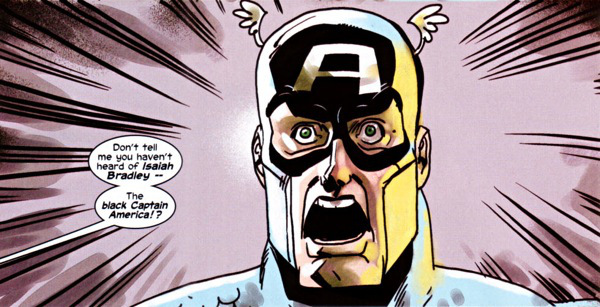
What Happened in Truth: Red, White, and Black
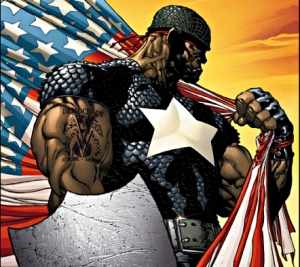
Isaiah is a soldier in an all-black unit. He and his companions are insultingly underutilized and given mundane tasks such as building latrines and essentially handling housekeeping matters while the white soldiers embark on critical missions. They see a glimmer of hope when the entire black camp is called for a special assignment. A small number of men are selected and loaded into trucks, while the rest are unjustly slaughtered to cover the tracks of the project. Isaiah and the others selected are then subjected to injections of early versions of the serum, resulting in strange deformities and often death for many of the men. An even smaller handful of men survive and are put back in the field. In spite of their new superhuman strength Isaiah and his friends are still mistreated at the hands of their superiors and sent into pointless missions from which many don’t return.
As Isaiah and his counterparts try to come to grips with their new reality, Steve Rogers immerges on the scene as a glorified hero, completely unaware of the carnage necessary to create the serum that has made him so beloved. Soon Isaiah is the only man left from his unit, and is sent on a suicide mission behind enemy lines. He survives and returns to the U.S. only to be further mistreated and brutalized by the American Government. He is charged with stealing the Captain America costume he wore into his assumed final mission and is put in prison.
The series ends with Steve Rogers finding out about Isaiah, and subsequently coming to terms with the truth (hence the title) of racism in America. He takes back the costume that Isaiah was accused of stealing and goes to find his family. When he arrives at the Bradley home, Rogers is greeted by Isaiah’s wife, Faith. Faith informs him that Isaiah is still alive; kept young by the serum but mentally absent. Rogers meets Isaiah and returns his costume to him, giving Bradley the recognition and praise he has long deserved.
Mirroring History
Morales’ take on Captain America is gripping, drawing on as many historically relevant events as the original title. Beyond fighting Nazis, Morales looks at America’s own inner battles and the very real evils that existed on the Home-front. It suggests an important and previously ignored truth: an ideal young white man like Rogers would have been an unlikely first test subject for a potentially deadly serum. There had to be other human test subjects beforehand. The American military’s history of misuse and unjust experimentation on black soldiers would have made them the most obvious targets. Morales draws on the horrors of the Tuskegee Airmen; a secret project in which the American Government pretended to treat African American soldiers for syphilis, while instead infecting them without consent and essentially letting them die.
This parallel pulls an often dismissed fact of American history into the world of fiction, and recreates it through the lens of Steve Rogers’ American Dream. While Rogers fights America’s overseas enemies, the biggest threat to Isaiah and his unit are fellow Americans; the same fellow Americans that are meant to look after their well-being.
Whose American Dream?
Rogers fights for the glorified America that we’d like to believe exists. In a sense he is blind to some of the deep seeded cultural issues that affect minorities and other marginalized groups here at home. His American Dream is a world of peace and morality. While honorable, this title draws attention to Rogers’ blind spot and shows him that the America he sees is not the same for all of its citizens.
Isaiah’s dream is fundamentally different. Where Roger’s wants peace Isaiah wants equality, where Rogers wants to serve Isaiah simply wants to survive. Steve Rogers has a sense of pride in his home country that makes him glad to sacrifice in the face of unbeatable odds. Isaiah is more in tune with what happens behind the curtain, understanding that the freedom Rogers is fighting for is not guaranteed to everyone. Even if they are successful in defeating the Nazis, Isaiah knows he does not have a parade or medal waiting for him on the other side. His fight on the front-lines is just as complicated as his fight at home.
Cap as a Symbol
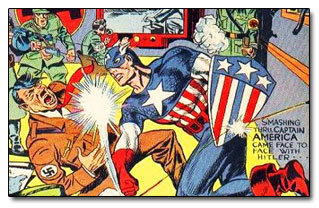
When Captain America was written in the 1940’s he was Marvel’s direct response to the looming Nazi threat. Cap burst into print with patriotic vigor, his first cover depicting Hitler receiving a well-deserved punch to the face. From that moment on Captain America became a metaphor for America itself. The glowing, honest Steve Rogers was a depiction of the ideal 1940’s American citizen. He was brave, caring, selfless, and white.
While Rogers is a great character, the idea of him being the only superhero symbol of America erases generations of struggle for minorities by suggesting that his idealistic existence is the true representation of American culture. The inclusion of Isaiah Bradley adds another layer to the symbol, one that gives voice to the American heroes that we don’t talk about, the ones that were hurt by the very country they enlisted to protect.
Isaiah symbolizes a fight that reaches far beyond bank robbers, super villains, and other obvious evils. His fight is against racial discrimination, unfair profiling, and the struggle that minorities have to face while trying to access the same freedoms that others rarely have to think about. This makes Bradley’s story unpleasant and somewhat uncomfortable. We like to see our heroes win, and because of the still existent racism at home Isaiah never does.
Racial Framing
Comic books have always had a way of framing culture through fiction. Just as World War II shaped the adventures of the Golden Age Heroes, current heroes reflect the attitudes of today’s world back to their readers. These seemingly simplistic stories give readers a way to access complex cultural problems through an entertaining medium. More importantly, they open up a discourse between fans about what this generation finds important.
Though Truth was written in 2003, Isaiah’s struggle is still relevant. Just as he highlights Steve’s racial blindness, the story can draw reader’s attention to what they may not be seeing in their own lives. It is likely that many readers found Isaiah’s ordeal impossible, believing whole heartedly in the moral America that Rogers defends. But Isaiah’s story is grounded in heartbreaking truth, shedding light on a dark and shameful reality in America. We are in many senses free, but even in the world of 2015 not universally equal. Recent events like the “Black Lives Matter” movement once again draw perhaps blinded Americans back into the truth; there is still much more work to be done.
The Absent Hero
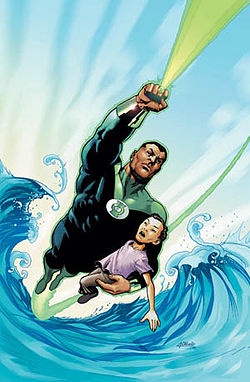
Truth gained much needed ground for the voice of African American culture in comic books, however, many know superheroes in terms of DC’s big three (Superman, Batman, and Wonder Woman), or Marvel’s big four (Spiderman, Captain America, Iron Man, and Thor). Apart from several cinematic and animated appearances of black characters like Storm (The X-Men) or John Stewart (Justice League The Animated Series, Green Lantern), there is very little publicity for black Superheroes. It is unlikely to find a Black Panther t shirt in Wal-Mart nestled among the Superman and Batman shirts, and it is even more unlikely to come across a Static Shock action figure in Toys R Us. Black characters like Isaiah Bradley are being written, but much like his story are vastly underutilized. Captain America is a household name, but only as Steve Rogers.
Despite being published over a decade ago, Truth’s version of Captain America is little known and completely absent from merchandise and film. This was a phenomenon predicted within the book itself. In issue #4, one of Bradley’s fellow super soldiers reads a Captain America comic book that has likely been distributed to soldiers for morale purposes. Instead of being outraged that they are not receiving the same amount of publicity as the white super soldier, his only comment is to hope that he could one day draw a comic book of his own. The issue makes it clear that while the black super soldiers are just as strong and just as capable, they are essentially pushed aside in favor of the white version.
Isaiah Bradley was a fantastic answer to diversifying and redefining the Marvel mythos. He makes Captain America’s story richer with racial honesty. This progress means little, however, if publishers don’t push to bring such progressive characters to the forefront. Children and young adults like to see themselves in their heroes, and become fully immersed by using these heroes as a connection to their wildest dreams. The exclusion of black heroes from readily available merchandise, television, and film means that non-white children are limited in how closely they can connect to the characters, and have very few if any options of complex heroes that actually look like them.
In his book Super Black: American Pop Culture and Black Superheroes, Adilifu Nama critiques the lack of black faces in the superhero world. “A virtually indestructible white man flying around the world in the name of ‘truth, justice, and the American way’ is not a figure black folks should waste their time believing in.”[1] Nama goes on to discuss a lack of positive African American role models as contributing to inner feelings of low self-worth in young black children. He cites Kenneth Clark’ s “doll test”[2], in which children are asked to choose between black and white baby dolls when deciding which is the pretty, ugly, good, and bad doll. Both black and white children seemed to favor white dolls, suggesting that many black children suffered from an inability to see those that look like themselves as possessing positive traits. “The results also implied that black children need ‘positive’ black images to help counteract low self-esteem. Against this theoretical backdrop the need to create black superheroes for black children to identify with takes on greater significance as a social problem”[3]
Enter Sam Wilson
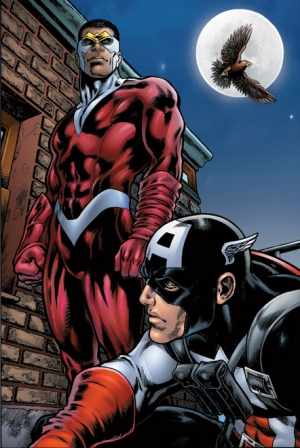
Marvel, DC, and many other successful comic publishers have recently tried to combat the race issue. The response has largely been to pass on already existent hero personas to non-white characters. The previously blonde haired Ms. Marvel is now a young Muslim girl. In the Ultimate universe, the identity of Spider Man has passed from white Peter Parker to half Hispanic/ half black Miles Morales. In the past year Marvel has announced that Steve Rogers will be stepping down as Captain America to be replaced by Sam Wilson. Sam Wilson is another African American character better known as Falcon. Fans already like Wilson, many recognizing him by his minor role in recent Avengers films. This change means that there will now have been more black Captain Americas than white. Once again writers will have a shot at redefining the Captain America symbol to be more inclusive of marginalized groups, and hopefully give a voice to some of the real racial issues in our society.
This change has been met with mixed feelings. While some fans welcome the switch, others feel that it is a cheap publicity stunt created to gain the praise of fans that have advocated for more diversity. It has raised a question of whether or not giving a popular character’s identity to a character of a different race is actually creating fair representation, or simply forcing minority characters to wear a white character’s identity instead of their own. Many fans believe that the correct move would have been to let Sam Wilson remain Falcon, and simply give Falcon more publicity and his own title. Furthermore, it has drawn attention to the comic industry’s reluctance to create and promote new characters when the classics are so successful.
Because these newly diverse characters are living under previously white mantels, the changes at their most innocent can suggest a level of laziness in publishers, or financial uncertainty. At their darkest, these changes could simply be another form of reading non-white cultures through a white lens; forcing these minority characters to live under the pressure of their white predecessor’s fame and forever being defined by the previous character’s white identity. In a sense this creates a competition between white and non-white characters. Because the non-white heroes are now wearing a white character’s persona, they will always be compared to said white character, and read as whether they are a better or worse version of that hero instead of being defined on their own terms. Isaiah escapes this trap by existing at the same time as Rogers, however Sam Wilson will not be so lucky.
These questions are only a few in an ongoing fight to create a more inclusive comic book universe. Comic books were historically written to cater to a white male audience, an audience that has now shifted and begun to demand change. Fortunately, Isaiah and Steve show that different racial voices can coexist within ideas of heroism, and fictional outlets can offer very honest insight into the struggles and triumphs of all races of people. It can be hoped that the next ten years will promote diversity in fictional outlets, and the much needed African American role models discussed by Nama will be created and well-advertised. In the meantime, Truth: Red White and Black is deserving of praise beyond that of a creative take on an old story. Truth offers readers the flip side of the American Dream, one fused with cultural unrest and an ongoing fight for true freedom. Just as Steve Rogers is a well-known and universally beloved superhero, Isaiah Bradley deserve his uniform, as the inseparable second half to an American icon.
Works Cited
[1] Nama, Adilifu. Super Black: American pop culture and Black superheroes. University of Texas Press, 2011. (Page 10.)
[2] Clark, Kenneth B., and Mamie P. Clark. “Emotional factors in racial identification and preference in Negro children.” Journal of Negro Education (1950): 341-350.
[3] Nama, Adilifu. Super Black: American pop culture and Black superheroes. University of Texas Press, 2011..( Pages 9 – 10)
What do you think? Leave a comment.

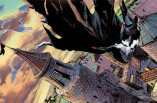

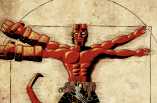

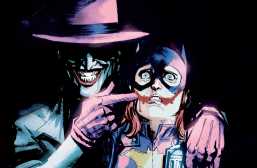
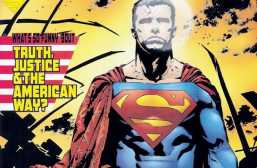
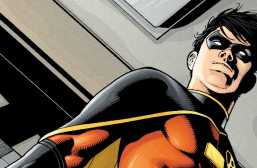
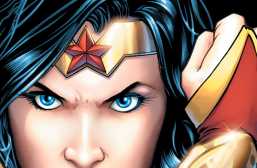
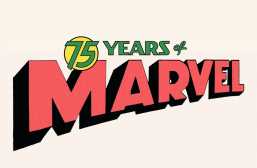
If your going to change Captain America then I would like to see a Navajo Indian be Captain America Indians are always ignored I never see a super hero who was an Indian and when you look at it Indian lived on American land before it became the United States but we don’t see people fighting about that.
A native American hero could be cool!
I agree, it would be really cool to see a popular superhero with indigenous american heritage! I googled it, and there’s actually been a ton (https://en.wikipedia.org/wiki/List_of_Native_American_superheroes#DC_Comics) written in books published by Marvel, DC, Image, and more, but they never seem to take off or stay around long.
Captain America is an idea not a person. Any worthy American can don the Captain America uniform to represent justice in the American way.
They’ve been telling Captain America stories for 74 years. He’s been many people, he’s been killed, resurrected, lost his powers, cloned…
Isaiah Bradley already existed in the Marvel world and honestly they should’ve revamped his story instead of making Sam Wilson the new Capt. He also has a grandson in the Young Avengers called “The Patriot”. They should’ve used those characters.
This storyline reminds me of the Buffalo Soldiers, a regiment of Black soldiers that fought for America against the Native Indians.
I also love the Black Panther storyline with the vibranium in an African village where Hydra tries to exploit the country as a parallel to the real life colonization of Africa for gold and diamonds. When I watched this series with my younger son we were able to talk about this issue of throughout history where colonizers have displaced people to exploit resources. I would also recommend the Black Spiderman as another unique superhero series in an urban setting with his own storyline about his parents.
Black superheroes are here to stay! I hope they stay unique to the voice and hopefully, are not whitewashed. Literally! These issues are actually educational and can be used to leverage discussions about race and power with kids from a young age as a way to raise their social consciousness.
Now all we need is more female superheroes : )
The new Captain America is a fresh superhero for a fresh century, in which ethnic and cultural barriers are becoming increasingly ethereal. I know for certain I will get my son a few of these comics should I run into them in a store.
The Falcon is the perfect person to take up the role of Captain America. There are few people who fought alongside Steve Rogers more than Sam Wilson!
Well Captain America, as a name/franchise, IS more important than Falcon. Just as Batman is more important than Nightwing. It’s all about marketing.
Nice post. Different characters playing comic characters is far from rare.
Steve Englehart’s run on Captain America and the Falcon from the 70s is one of he best in comics – trouble is, that was pre-Moore and it’s not cool to admit that comics were good then. Shame.
Two words – Isiah Bradley. The King!
Two more- Eli Bradley
You only have to read a superhero biography on wikipedia to realise that every superhero has been black/female/alien/child/animal/zombie at some point.
Personally I’ve never had a problem with new versions changing the race (or gender of fictional characters, provided their race/gender isn’t integral to the plot or characterisation, though sometimes, depending on how it’s done, feel it is a bit of a cheap gimmick to appear innovative. In this case though I don’t see how anyone could object, as they’re essentially writing out the white captain america and a new black character is taking on the mantle, so there’s no question of it affecting the continuity, characterisation etc.
I’m not sure that’s true, The Capt was the first Avenger, he was around before any of the others and also the inspiration for the existence of the others.
Falcon can go by the name of Captain America but he can never be that first superhero only try be a new representative of America (as if they don’t have enough American superheroes already).
I agree that he won’t be the same character, but I don’t think there’s a problem with retiring a character from a job (Captain America being the job, Steve Rogers being the man who does that Job) and a new character taking the job on, provided that they don’t retcon so that Sam Wilson was Captain America all along etc.
Develop new diverse characters instead of overwriting good current ones, but that takes time(new readers seem to be impatient) and talent.
Can anybody really be defined by race?
Defining something through race is completely different than being defined by race
Do you think that Marvel’s long term plan (i.e. development of a Black Panther movie, ect) may have a positive effect on the outcome of marketing toys/apparel of this nature? Or are we just going to see another Black Widow situation where she becomes completely or nearly erased in Avengers merchandise?
Steve Rogers is Captain America always will be.
I support diversity, hell im almost a feminist. But i do NOT accept Sam Wilson to take on the mantle as captain America in the cinematic universe.
It’s hard to let go of the originals… but I do really like seeing mantles passed and the allowance of more diverse characters. I just hope that when it happens in the movies they are able to do them justice.
I personally am bored of our current heros. I’d love to see some new comic writers on the scene actually become movies. And with this, I’d hope to see diversity and characters that are relatable now.
I wish they pushed original characters to challenge the current stautus quo on their own merit, rather than characters who although taking up the mantle of huge heroes are likely to be only temporary replacements.
Remember that every version of a character is for someone “their” version. For me, despite being a LONG time comics reader, “my” Batman is actually Dick from when he took the cowl, “my” Cap is Bucky from when he took up the shield, and “my” Spiderman is the Superior one.
Great article. It was very well-written and you made a lot of good points.
Sam Wilson is a hero already, and he’s one person who’d only take the role in honour of its original bearer. When Steve recovers, and he will recover, Sam will give him back the shield happily.
“Morales draws on the horrors of the Tuskegee Airmen; a secret project in which the American Government pretended to treat African American soldiers for syphilis, while instead infecting them without consent and essentially letting them die.”
The Tuskegee Airmen were actually an all-black military flight unit during World War II. The Tuskegee syphilis study is the project Morales gestures to in his work. The project did not actually infect participants with syphilis, although it did monitor the progression of the disease without treating it.
Actually Bradley wasn’t the first.
https://marvel.fandom.com/wiki/Isaiah_Bradley_(Earth-616)
Capt was created before Pearl Harbor in the continuity, when Bradley appeared after Pearl Harbor and the experiment were meant as an attempt to recreate the effects of the serum. This was mentioned specifically by the series’ writers.
https://en.wikipedia.org/wiki/Isaiah_Bradley#Captain_America_timeline
Likewise, as a reader noted, Bradley was shown reading a comic in Issue #4 with Rogers in it.
http://theblerdgurl.com/comics/6520/